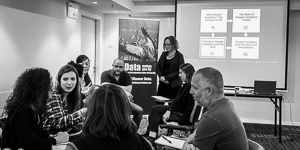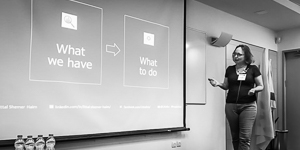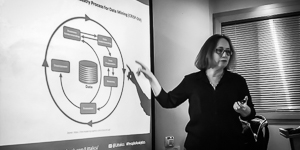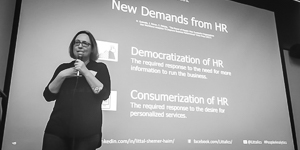Littal Shemer Haim
People Analytics, HR Data Strategy, Organizational Research – Consultant, Mentor, Speaker, Influencer
People Analytics Consultant, Workforce Data Strategist
Littal Shemer Haim helps organizations improve business performance by informed decisions about people. She offers leaders guidance in the journey toward a data-driven workforce and conducts People Analytics and Organizational Research projects.
Littal explores innovation in the work-tech ecosystem. She writes and lectures about People, Data, Ethics, and the Future of Work. In addition, she leads learning programs in People Analytics and HR tech.
Littal enjoys keynote speaking at various conferences and professional events in Israel and globally. She shares her knowledge and +25 years of experience in People Analytics, Workforce Data Strategy, and Organizational Research. She is also frequently invited to speak at internal company events.










Latest Activities and Achievements
Productivity Measures: Time or Outputs?
The productivity of knowledge workers is measured both by outputs and focus time. This blog explores this subject with Covid19 and pre-Covid19 case studies, and some personal experience and hacks.
Key takeaways from Unleash, Paris 2019 – Part 2: Career paths
A four blog series that covers key takeaways from Unleash, Paris 2019. The 1st blog is focused on the future of work and learning. The 2nd covers new technologies for career paths. The 3rd is about the People Analytics journey. The 4th explores insights about digital transformation of HR.
A Lighthouse in the Rough Seas of HR-Tech
Sailing the rough seas of work-tech solutions? This List, based on Littal’s industry analysis, may be your lighthouse. Find here links to great work-tech innovation and solutions, sorted into ten main categories, based on employee lifecycle
AI for HR – Five themes that you must understand (Part 1)
To face both technical and social difficulties related to AI, every HR leader should start understanding 5 themes: What AI is – or isn’t? How accurate is AI? Why AI prone to bias? How people react to AI? How legal frameworks deal with AI? This part discusses the first 3...
Text Me!
Let’s connect on WhatsApp:
+972-50-4001101
Virtual Coffee
Discuss your questions about upskilling and career choices in People Analytics (a paid opportunity for individuals).



